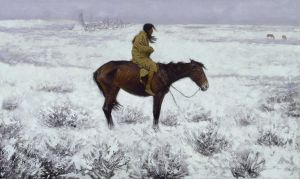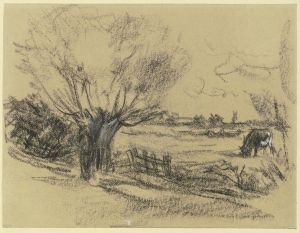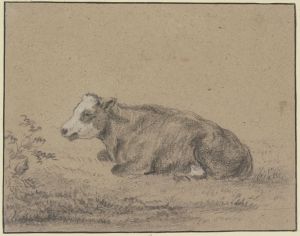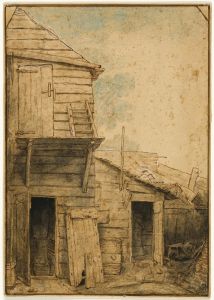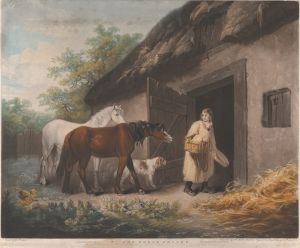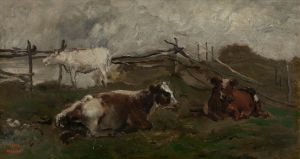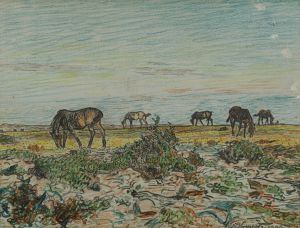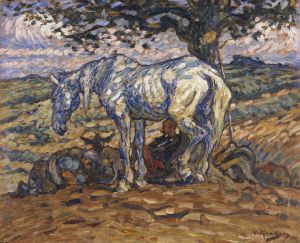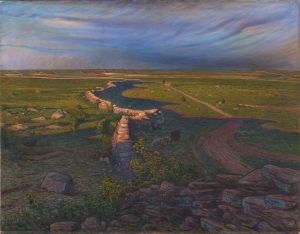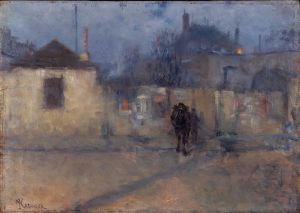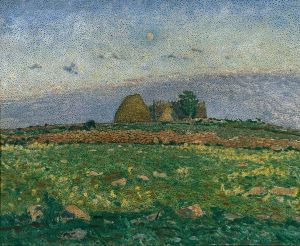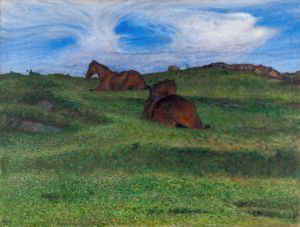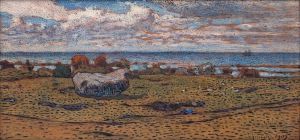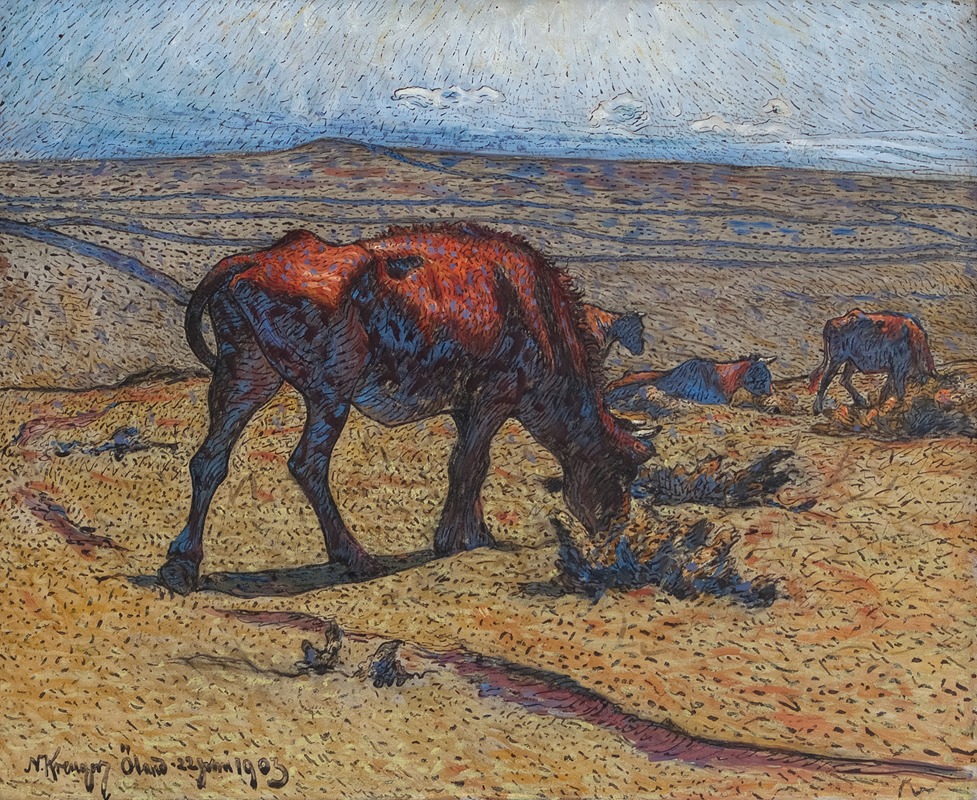
Heiffers
A hand-painted replica of Nils Kreuger’s masterpiece Heiffers, meticulously crafted by professional artists to capture the true essence of the original. Each piece is created with museum-quality canvas and rare mineral pigments, carefully painted by experienced artists with delicate brushstrokes and rich, layered colors to perfectly recreate the texture of the original artwork. Unlike machine-printed reproductions, this hand-painted version brings the painting to life, infused with the artist’s emotions and skill in every stroke. Whether for personal collection or home decoration, it instantly elevates the artistic atmosphere of any space.
Nils Kreuger (1858–1930) was a prominent Swedish painter known for his landscapes and depictions of rural life. He was a key figure in the development of Swedish art during the late 19th and early 20th centuries. Kreuger was associated with the Varberg School, a group of artists who were instrumental in introducing new artistic styles and techniques to Sweden, particularly those influenced by French Impressionism and Post-Impressionism.
"Heiffers" is one of Kreuger's notable works, showcasing his skill in capturing the essence of rural Sweden. Painted during a period when Kreuger was deeply influenced by the natural landscapes and agrarian life of his homeland, the artwork reflects his keen observation and appreciation of the countryside. Kreuger often focused on the interaction between light and landscape, a characteristic feature of his work that is evident in "Heiffers."
The painting depicts a serene rural scene, featuring a group of heifers, which are young female cows that have not borne a calf. Kreuger’s choice of subject matter highlights his interest in everyday rural life and the natural environment. The composition is likely to emphasize the harmony between the animals and their surroundings, a common theme in Kreuger’s work. His use of color and light would typically aim to capture the specific time of day and season, bringing a sense of realism and immediacy to the scene.
Kreuger’s technique often involved a careful balance between detail and broader brushstrokes, allowing him to convey both the texture of the landscape and the form of the animals. This approach was influenced by his exposure to French Impressionism, which he encountered during his studies in Paris. However, Kreuger adapted these influences to suit his own vision, creating works that were distinctly Swedish in character.
Throughout his career, Kreuger remained committed to depicting the Swedish landscape and rural life, contributing significantly to the national art scene. His works are celebrated for their ability to convey the beauty and tranquility of the Swedish countryside, as well as for their technical proficiency and innovative use of color and light.
"Heiffers" is representative of Kreuger’s broader oeuvre, which includes numerous paintings of rural scenes, often featuring livestock and the changing seasons. His work has been exhibited in various galleries and museums, both in Sweden and internationally, and continues to be appreciated for its artistic and cultural significance.
Nils Kreuger’s legacy is that of an artist who captured the spirit of rural Sweden with sensitivity and skill, leaving behind a body of work that remains influential in the study of Swedish art history. His paintings, including "Heiffers," offer a window into the pastoral life of his time, rendered with a unique blend of realism and impressionistic flair.





